Subversion has shaped the destinies of nations, altering history without requiring open conflict or conventional warfare. Unlike direct sabotage or military action, it works quietly and indirectly. Subversion infiltrates institutions, shifts public opinion, and reshapes ideologies from within. Its power lies in stealth, not speed. By patiently exploiting internal weaknesses, it slowly erodes authority without exposing itself. Subversion does not demand attention—it demands time.
Throughout history, subversion has been a tool for both revolutionaries and authoritarian regimes. Reformers use it to challenge injustice and dismantle corrupt systems. Oppressors use it to silence dissent and weaken rivals. It empowers the oppressed or strengthens repression—depending on who controls it. Subversion serves both freedom and control.
Subversion works by combining manipulation, propaganda, infiltration, and psychological pressure. These tools can quietly destabilize even strong and stable societies. It challenges how communities stay united and weakens trust in leadership. It also exploits divisions in politics and society. For example, during the Cold War, subversion fueled major ideological battles. Today, digital disinformation campaigns use the same tactics—only faster and wider.
In both cases, subversion shapes events without firing a single shot.
In today’s world, information spreads faster than ever. At the same time, institutions are more vulnerable to narrative disruption. As a result, the power of subversion has only increased. It shows that influence, when used with precision, can match or even exceed brute force. Subversion continues to reshape political realities—often without a single act of violence.
What Is Subversion?
Subversion is the strategic act of undermining the authority, legitimacy, or stability of a government, organization, or social institution—often from within. Unlike open rebellion or warfare, subversion typically operates through indirect, covert, or psychological means, aiming to shift perceptions, destabilize systems, and weaken societal cohesion without immediate conflict.
Instead of direct attacks, subversive efforts focus on weak points in a society. They target beliefs, cultural values, and trust in key institutions. The goal is to slowly break public confidence and disturb the existing order without open conflict.
The goal is not always immediate overthrow, but to create conditions in which authority becomes ineffective, illegitimate, or irrelevant.
Common tools of subversion include:
- Propaganda that warps truth or fuels divisions.
- Infiltration of influential institutions, such as media, education, or civil services.
- Disinformation and misinformation that spread confusion and undermine consensus.
- Psychological operations (PSYOPs) designed to manipulate perception and morale.
Subversion has historically been wielded by both oppressive regimes and freedom movements. Subversion has helped fight injustice and authoritarian rule, as seen in the Civil Rights Movement and anti-colonial struggles. But it has also been used to silence opposition, disrupt democracies, and mislead the public. Examples include election interference and propaganda campaigns led by powerful states to control public opinion.
Ultimately, subversion is a double-edged sword. Its effectiveness lies in its subtlety, but its moral impact depends on who uses it—and for what end. Subversion, whether used for freedom or control, remains a powerful force in shaping political and social change. It has influenced both past and present events, proving its lasting impact across time and place.
Otpor: A Modern Icon of Subversion
One of the most compelling examples of modern subversion is Otpor (“Resistance”), the Serbian youth-led movement that catalyzed the downfall of Slobodan Milošević in 2000. Founded in 1998 by university students, Otpor emerged as a bold, creative force that challenged entrenched authoritarianism through nonviolent yet highly disruptive means. Rather than relying on traditional political mechanisms, Otpor leveraged culture, symbolism, and psychology to mobilize public dissent and weaken the regime’s grip on power.
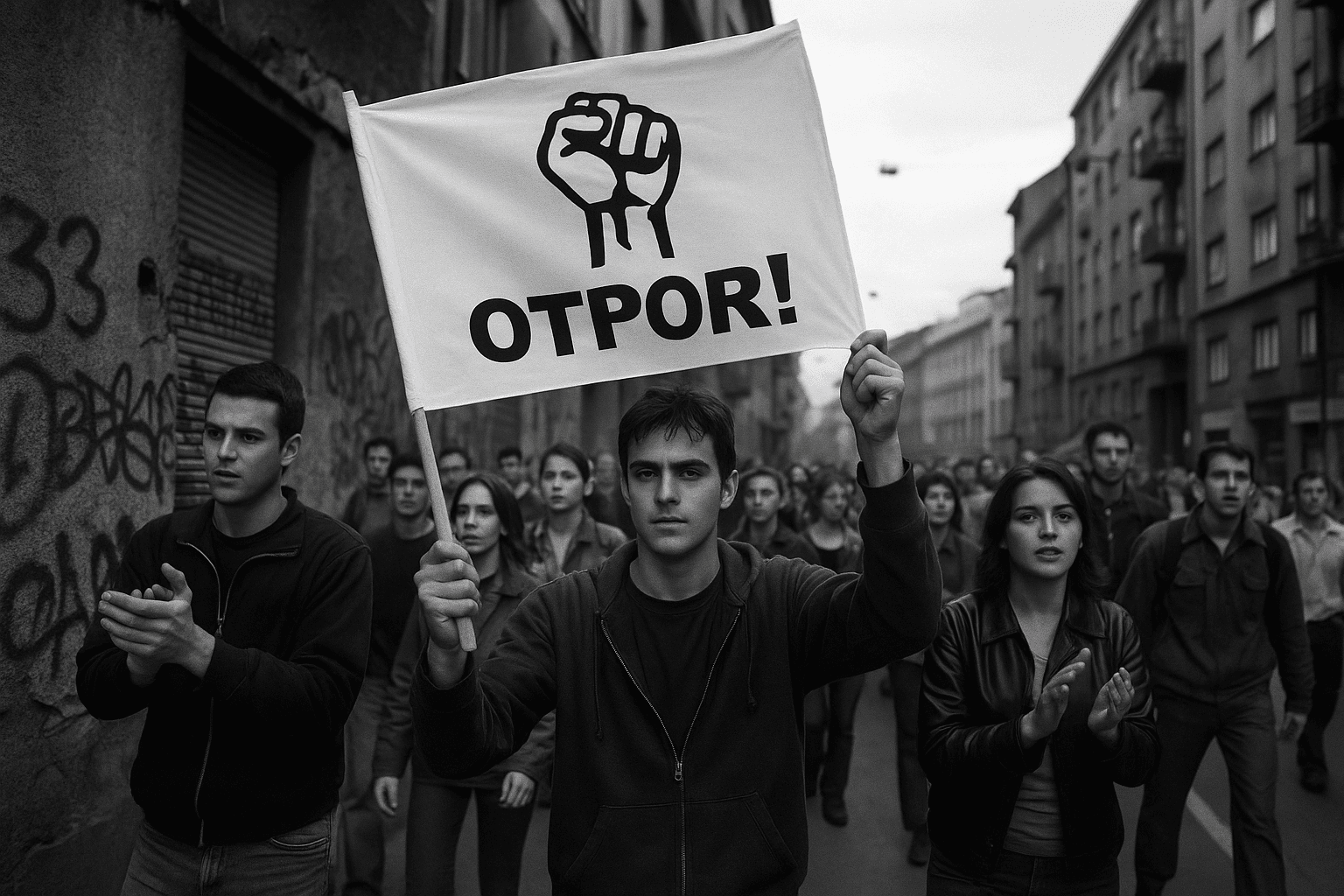
Led by figures like Srđa Popović, Otpor used humor, street theater, and bold visuals to challenge the regime. These creative tactics exposed government flaws and engaged a disillusioned public. By understanding how people think and feel, the movement used stories and symbols to inspire action and build support.
Symbolism
Otpor’s raised fist logo became a powerful symbol of unity and defiance, both in Serbia and around the world. It showed strength and youthful energy, even under pressure. The image spread through graffiti, posters, and T-shirts—carrying the message despite strict media control.
Grassroots Organization
Otpor adopted a decentralized cell structure, which made it difficult for security forces to dismantle. Local groups operated autonomously but adhered to shared principles and strategy, creating a resilient and adaptive movement that could withstand arrests and repression.
Public Engagement
Otpor’s key trait was its ability to engage the public creatively. Through pranks, flash mobs, and clever use of satire, it took away the regime’s aura of invincibility and drew in a broad cross-section of society—particularly the youth and urban middle class—who had previously remained politically inactive.
Legacy and Impact
The success of Otpor in helping to peacefully remove Milošević from power sparked a global wave of emulation. Its leaders went on to form CANVAS (Centre for Applied Nonviolent Action and Strategies), which trained activists in over 50 countries, influencing uprisings during the Arab Spring, the Rose Revolution in Georgia, and pro-democracy movements in Eastern Europe and beyond.
Otpor showed that strategic subversion—when grounded in nonviolence, cultural fluency, and organizational discipline—can shift the balance of power without a single bullet fired. Its methods remain a blueprint for modern resistance movements confronting authoritarianism in the digital age.
Solidarność: Subversion Against Communism
The Solidarity (Solidarność) movement in Poland stands as a landmark case of nonviolent subversion against an entrenched authoritarian regime. Emerging in 1980 from the Gdańsk Shipyard strikes, Solidarity—led by Lech Wałęsa—began as an independent labor union challenging state-controlled unions. It quickly transformed into a broad-based social and political movement, uniting workers, intellectuals, students, and members of the clergy in a coordinated campaign against communist rule.
Grassroots Mobilization
What began as localized labor strikes grew into a nationwide network of civil resistance. Solidarity organized mass protests, underground publications, and acts of civil disobedience, challenging the Polish United Workers’ Party’s monopoly on power. Even after the declaration of martial law in 1981 and the movement’s temporary suppression, underground structures remained resilient and active, preserving momentum throughout the 1980s.
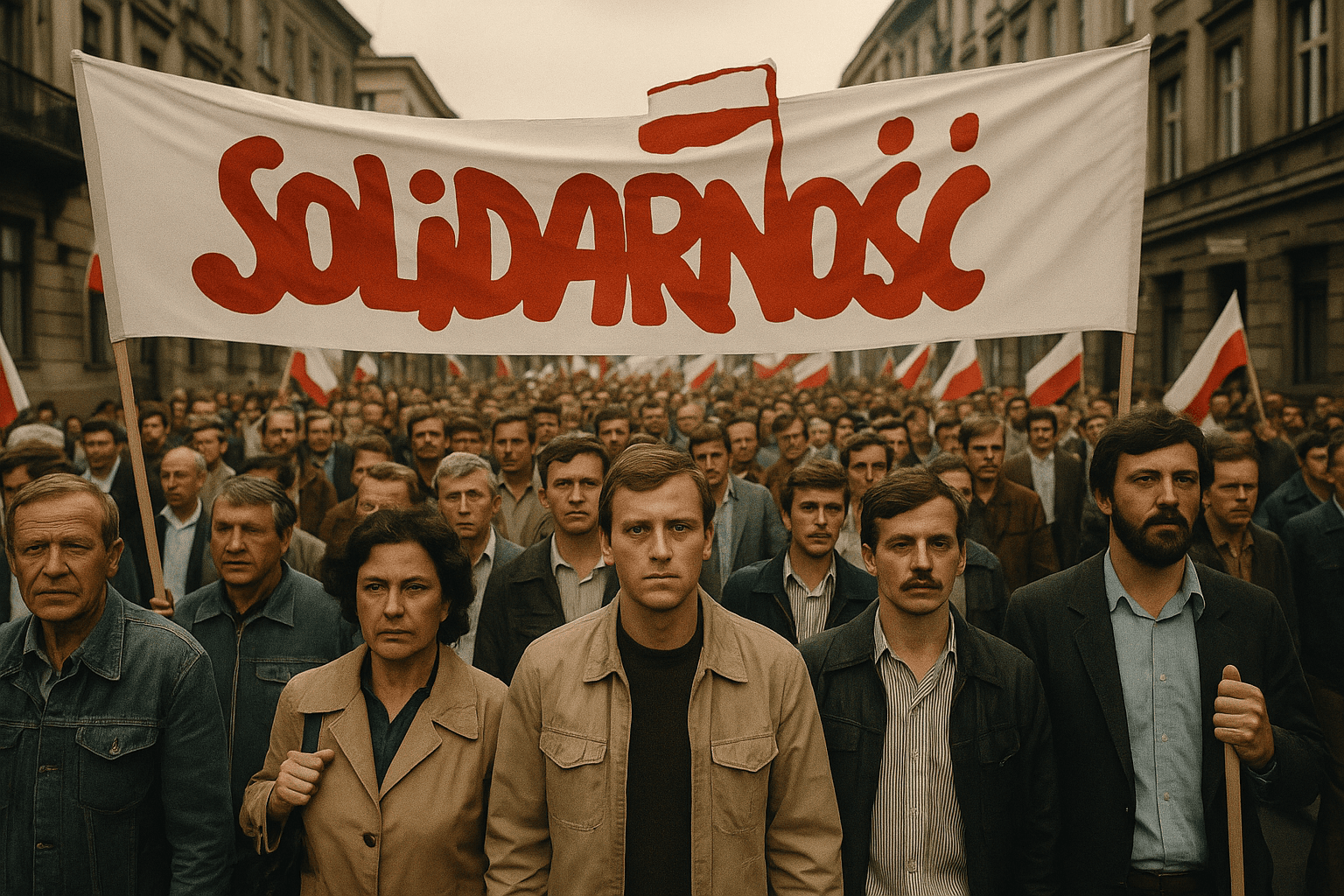
International Support
Solidarity captured global attention, receiving moral, financial, and logistical support from abroad. The Vatican, under Pope John Paul II, provided spiritual and symbolic encouragement, while the United States funneled covert aid through organizations like the AFL-CIO and supported Polish dissidents diplomatically and through media channels like Radio Free Europe.
Outcome
After nearly a decade of pressure, the communist government entered into negotiations with Solidarity during the Round Table Talks of 1989. These led to the first semi-free elections in the Eastern Bloc, in which Solidarity candidates won overwhelmingly. This historic moment triggered a domino effect, accelerating the collapse of communism across Central and Eastern Europe and paving the way for democratic transition.
Solidarity’s success demonstrated how persistent, well-organized subversion—rooted in national identity, solidarity across social classes, and nonviolent resistance—could erode authoritarian control. It became a model for civil resistance movements across the globe, proving that systems of repression can be dismantled through coordinated, peaceful defiance.
The Anti-Apartheid Movement
The Anti-Apartheid Movement in South Africa is a powerful example of sustained subversion used to challenge and ultimately end a rigid system of institutionalized racial oppression. For decades, activists combined grassroots resistance with international pressure to expose the brutality and injustice of apartheid to the world. Leaders like Nelson Mandela, Steve Biko, and Oliver Tambo played pivotal roles in organizing resistance, both publicly and covertly, under constant threat of surveillance, imprisonment, or death.
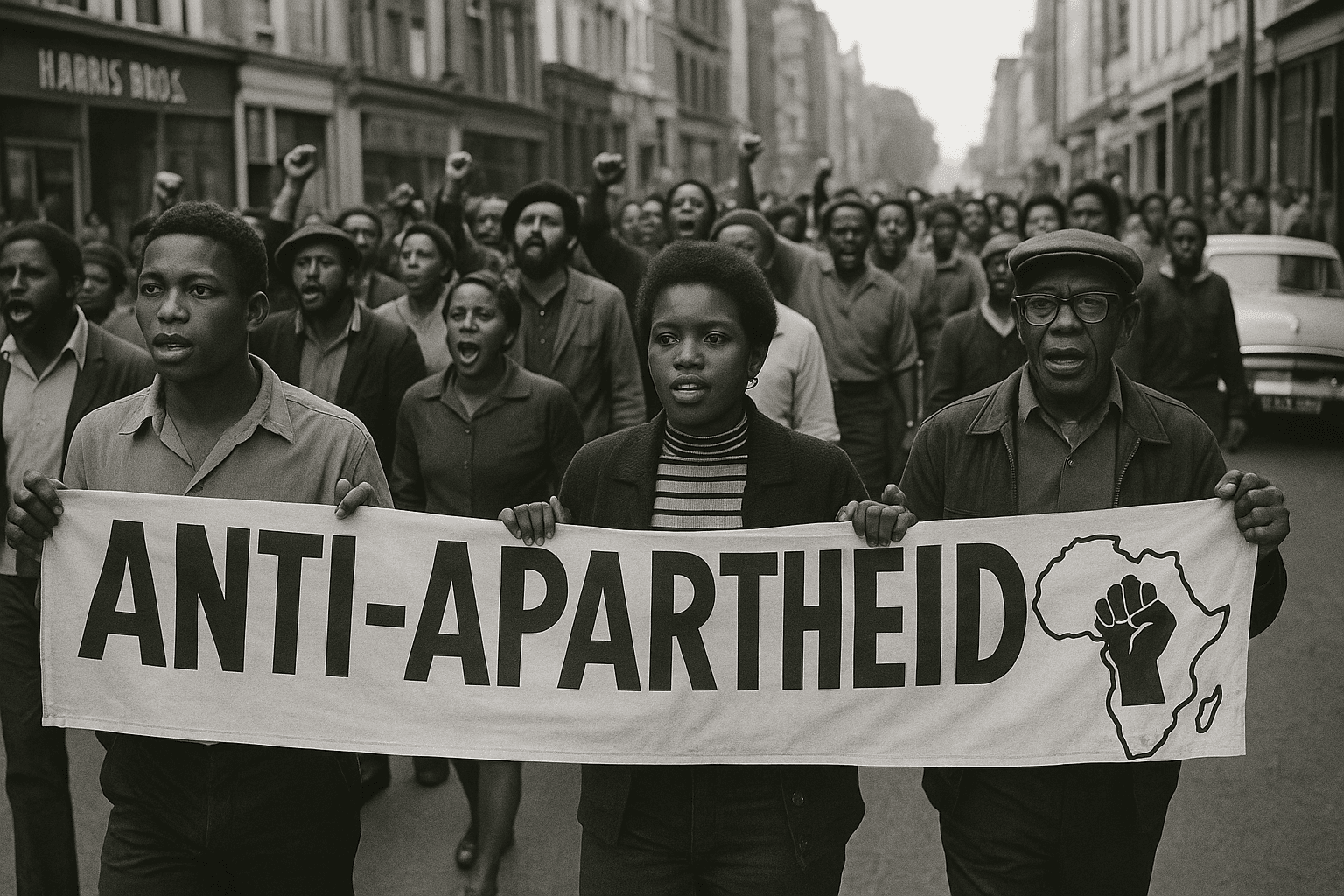
Global Boycotts
International solidarity proved essential. A vast network of activists, governments, and civil society actors launched economic and cultural boycotts, academic sanctions, and divestment campaigns. These acts of international subversion undermined South Africa’s global standing and placed increasing financial strain on the apartheid regime. The sporting boycott—denying South Africa participation in international competitions—also served as a powerful symbolic blow.
Local Resistance
Inside the country, groups like the African National Congress (ANC) and the Pan Africanist Congress (PAC) existed underground, organizing strikes, sabotage, and mass mobilizations. Civil disobedience campaigns, student protests, and cultural resistance efforts challenged the apartheid system from within, while activists in exile helped coordinate global advocacy.
Outcome
Years of continued subversion resulted in the fall of apartheid. In 1994, South Africa held its first multiracial democratic elections, with Nelson Mandela elected as president. The peaceful transition of power marked the triumph of a movement rooted in both nonviolent moral resistance and calculated subversive action.
The Anti-Apartheid Movement illustrates how a combination of internal resilience and external pressure—rooted in covert organization, sustained protest, and international advocacy—can overcome even the most entrenched systems of injustice.
The Civil Rights Movement
The Civil Rights Movement in the United States is a clear example of subversion used for justice, not chaos. Instead of violence or rebellion, leaders chose strategic nonviolence to reveal the injustice of racist laws. Figures like Martin Luther King Jr., Rosa Parks, and Malcolm X helped organize peaceful resistance to systemic inequality.
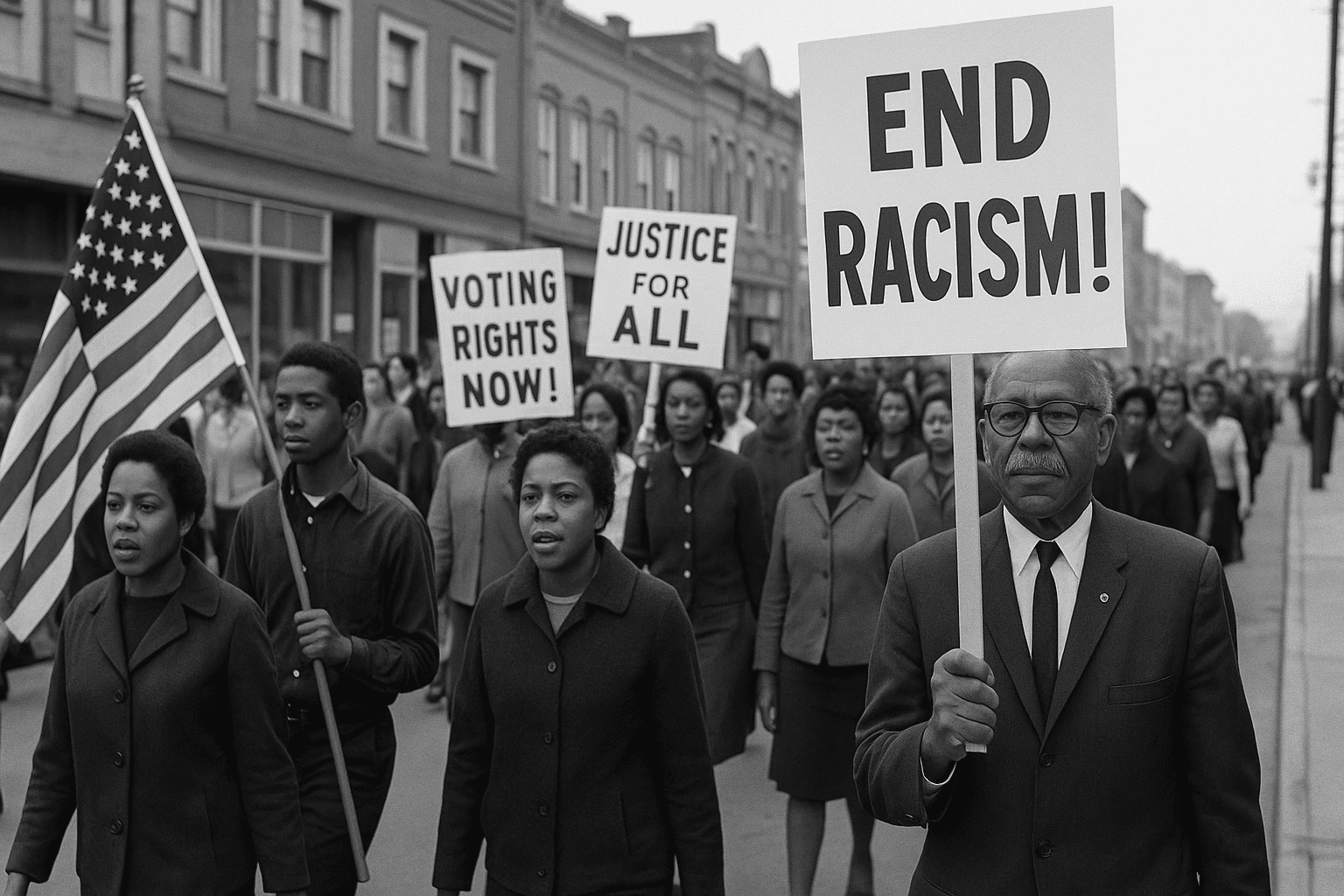
Mass Protests
From the Montgomery Bus Boycott to the Selma to Montgomery marches and the iconic March on Washington, mass mobilizations challenged the status quo by disrupting daily life and confronting the moral conscience of the nation. These highly visible protests galvanized media attention, exposed brutality, and forced the federal government to respond to grassroots demands.
Legislative Victories
Subversive yet peaceful tactics pressured policymakers to enact transformative legislation. The Civil Rights Act of 1964 outlawed segregation and discrimination in public accommodations, while the Voting Rights Act of 1965 dismantled barriers to Black enfranchisement—both landmark victories driven by organized, persistent civil resistance.
Legacy
The movement not only ended Jim Crow-era legal structures but also reshaped the broader social and political fabric of the United States. Its success inspired global struggles for justice, from South Africa’s anti-apartheid efforts to modern racial equity campaigns, illustrating the enduring power of subversive nonviolence as a force for structural change.
Ultimately, the Civil Rights Movement revealed that subversion—when rooted in ethical principles and collective action—can realign societies with their highest democratic ideals.
Historical Contexts of Subversion
Subversion is not new. It has shaped history across different eras and continents. From secret Cold War struggles to local resistance movements, it has challenged power in many forms. Subversion helps people disrupt control and organize for change. Used for survival, justice, or control, it often sparks major political shifts.
The Cold War Era
During the Cold War, subversion played a key role in the rivalry between the U.S. and the Soviet Union. Both sides used covert tactics to influence foreign governments and shape public opinion. The CIA and KGB ran campaigns using propaganda, psychological operations, and support for armed groups. Cultural tools like Voice of America and Radio Free Europe also spread messages to weaken enemy ideologies and fuel dissent.
The French Resistance
During World War II, French partisans used subversive tactics to weaken Nazi control. They printed and shared secret anti-Nazi messages, damaged transport and communication systems, and infiltrated Vichy-run offices. Their efforts disrupted German operations and helped Allied intelligence. This shows how local actions can support larger goals in wartime.
The Velvet Revolution
In 1989, the Velvet Revolution in Czechoslovakia demonstrated the power of nonviolent subversion. Dissidents, students, artists, and intellectuals formed underground networks that challenged the communist regime through theater, literature, independent media, and mass protest. By mobilizing public sentiment and maintaining strategic discipline, the movement brought down a deeply entrenched authoritarian system without a shot being fired. The peaceful transition to democracy highlighted how subversion, when rooted in civic unity and moral legitimacy, can drive systemic political change.
These historical cases illustrate the varied forms subversion can take—violent or nonviolent, internal or foreign-sponsored—and how it has consistently served as a catalyst for political upheaval and transformation.
Subversion in the Modern World
In today’s digital landscape, subversion has evolved far beyond traditional espionage or covert agitation. It now operates across multiple platforms—digital, social, and psychological—leveraging the speed, reach, and anonymity of the internet. Disinformation campaigns, psychological operations (PSYOPs), and narrative warfare are increasingly used by both state and non-state actors to destabilize societies without firing a shot.
Social media platforms, while enabling free expression, also provide fertile ground for manipulation. These channels are exploited to divide public discourse, amplify fringe ideologies, and undermine democratic institutions. Sophisticated actors employ bots, trolls, and algorithmic targeting to distribute false or misleading content designed to sow confusion, doubt, and division.
Cyber warfare and information operations have become integrated tools in the subversive arsenal. Unlike conventional conflict, these actions often remain below the threshold of war, making attribution difficult and retaliation complex. By shaping beliefs instead of attacking physical targets, adversaries can shift politics, divide societies, and weaken trust in government.
Case Study: The Arab Spring
Social media played a pivotal role in mobilizing protestors and spreading anti-government sentiment during the Arab Spring. Platforms like Twitter and Facebook enabled real-time coordination, message amplification, and international visibility. In Tunisia, Egypt, and Libya, digital tools helped drive mass mobilization and regime change. This shows how digital connectivity can empower or disrupt, depending on how it is used.
Case Study: Election Interference
Foreign influence operations—such as those linked to the 2016 U.S. presidential election—highlight how fake news, deepfakes, and disinformation can manipulate public opinion and distort democratic processes. These campaigns take advantage of social divisions and spread false stories across media platforms. They weaken trust in key institutions and threaten fair elections around the world.
Subversion today is more subtle and adaptable than ever before. Societies must now rethink defense beyond borders and territory. We must also protect the space where ideas, information, and influence shape our world.
Countering Subversion
To counter subversion, societies must build resilience across multiple domains, reinforcing both the institutional and cognitive layers of national defense.
Education: Promoting critical thinking skills is fundamental. A well-informed and analytically minded population is less susceptible to manipulation, conspiracy theories, and propaganda. Education systems should emphasize media literacy, historical context, and civic responsibility from an early age.
Transparency: Open and accountable governance reduces vulnerability to misinformation by establishing trust in legitimate institutions. Governments must communicate clearly and consistently, especially during crises, to prevent the spread of rumors and foreign-influenced narratives.
Unity: Strengthening social cohesion—across ethnic, political, and religious lines—makes it harder for adversaries to exploit internal divisions. This can be achieved through inclusive policymaking, public dialogue, and community engagement initiatives that reinforce shared identity.
At the same time, governments and organizations must invest in cybersecurity, AI safeguards, and information literacy. These steps are key to addressing the tech-driven side of modern subversion. In addition, countries should work together through intelligence sharing and joint response plans. Such cooperation is vital for defending against disinformation and hybrid threats.
Conclusion
Subversion may lack the drama of sabotage, but its long-term impact on societies and regimes is clear. It has quietly reshaped history, influencing movements like Otpor, Solidarity, the Anti-Apartheid Movement, and the Civil Rights Movement. These examples show how strategic subversion can overthrow oppressive regimes, drive social change, and inspire global solidarity.
The nature of subversion continues to evolve with modern technology and digital platforms. Social media, fake news, and online disinformation campaigns have added new dimensions, amplifying the reach and complexity of subversive strategies. These methods subtly manipulate ideologies, disrupt institutions, and undermine societal cohesion, making them a powerful force in modern conflicts.
Understanding and taking on covert threats is essential to protect democracy, social unity, and long-term stability. These threats are growing and often hard to detect. By studying both successful and failed cases of subversion, we gain important lessons. This knowledge helps us prepare for and counter similar challenges in today’s world.
Please see our article for a comprehensive analysis of subversion, its historical significance, and its modern implications. It provides a list of additional resources to deepen your understanding. By raising awareness and strengthening resilience, we can better face the dangers of subversion. This helps us build more stable and united societies. Prepared communities are harder to divide, mislead, or control. Ordinary citizens have the power to reduce the impact of hidden threats and help protect the future of their communities.
DISCLAIMER: Links included might be affiliate links. If you purchase a product or service with the links that I provide I may receive a small commission. There is no additional charge to you.
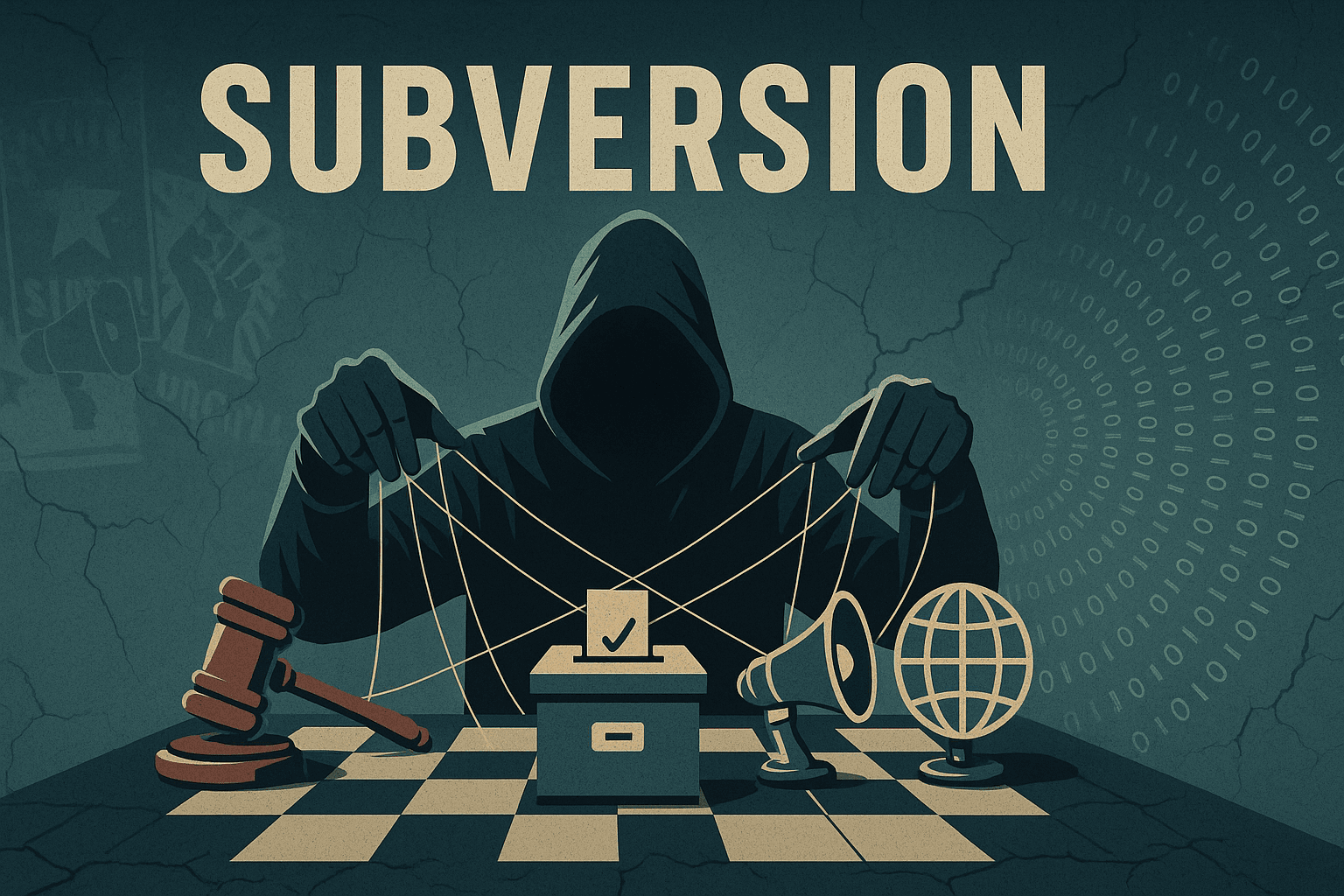

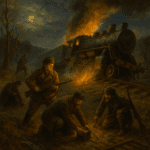

Leave a Reply